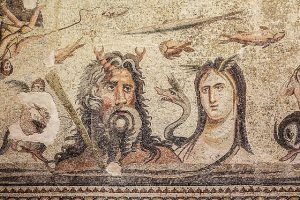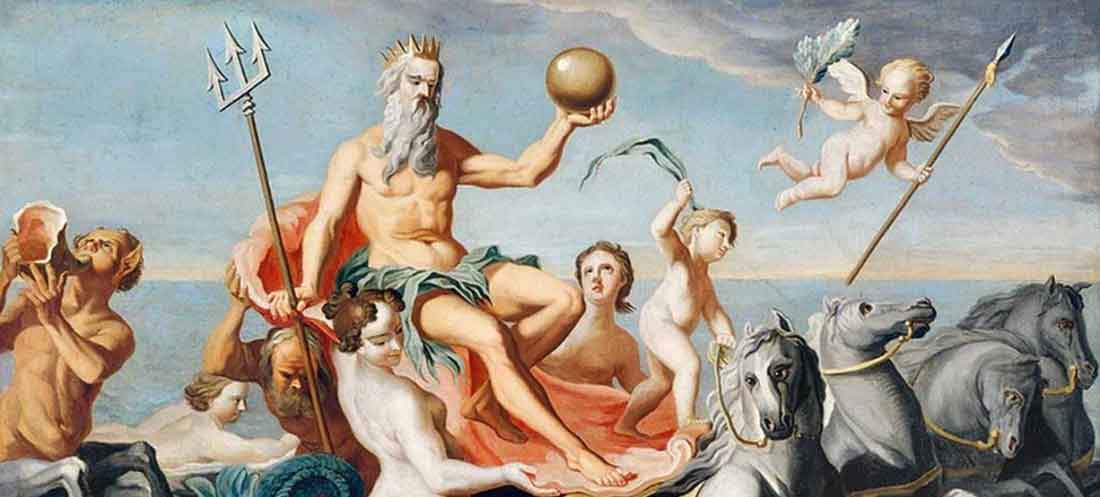Tethys the daughter of Uranus and Gaia

Tethys, a figure rooted deeply in Greek mythology, represents one of the many primordial deities who embody the natural elements of the world. As a Titaness, Tethys occupies a significant role within the cosmogony of ancient Greek belief systems. Her influence extends beyond her own mythological narrative, impacting various aspects of the Greek mythological framework, particularly through her offspring and her relationships with other deities.
Tethys, while not as prominent as other deities in Greek mythology, holds a fundamental place within the mythological and cosmogonical structure of the ancient Greek world. Her embodiment of freshwater and her role as the mother of numerous natural entities highlight the Greeks’ reverence for the natural world. Through her children, Tethys’ influence permeates various aspects of mythology, underscoring the interconnectedness of nature and the divine. Her legacy, though often overshadowed by the more anthropomorphic Olympian gods.
Tethys was born from the union of Uranus (Sky) and Gaia (Earth), making her one of the twelve original Titans. These Titans were considered the pre-Olympian gods who ruled during the Golden Age. Tethys’ siblings included prominent figures such as Cronus, Rhea, Oceanus, and Hyperion. Her marriage to her brother Oceanus further solidified her role in the pantheon as the embodiment of the nourishing and life-giving aspects of water.
Tethys is primarily recognized as a sea goddess. Unlike the more dynamic and anthropomorphized deities of later mythologies, the Titans often represented more abstract and elemental forces. Tethys, along with Oceanus, was seen as a caretaker of the earth’s fresh waters, encompassing rivers, springs, and fountains. This distinction sets her apart from other sea deities like Poseidon, who governed the oceans and seas.
Progeny and Influence
Tethys and Oceanus were prolific parents, giving birth to a significant number of offspring known as the Oceanids and the Potamoi. The Oceanids were three thousand nymphs who presided over various bodies of water and natural features, while the Potamoi were river gods. Among the notable Oceanids are Metis, who was the first wife of Zeus and the mother of Athena, and Styx, who was the personification of the river that formed the boundary between Earth and the Underworld.
The sheer number and diversity of Tethys’ offspring highlight her crucial role in the mythological ecosystem. Each of her children represented different aspects of the natural world, emphasizing the interconnectedness of all elements within the Greek understanding of the universe. Tethys herself was often invoked in prayers and hymns that sought blessings for fertility and abundance, reflecting her nurturing and life-sustaining powers.
Depictions and Worship
Despite her importance, Tethys was not a central figure in the popular mythology that centered around the Olympian gods. She was seldom depicted in ancient art and did not have a widely known mythological narrative or extensive cult worship. However, she occasionally appears in classical literature and art, often portrayed alongside Oceanus. For instance, in the Gigantomachy frieze of the Pergamon Altar, Tethys is depicted in a supportive role, emphasizing her status as a primordial force.
One of the rare direct references to Tethys in ancient literature comes from the works of Homer. In the “Iliad,” she is mentioned in passing as the caretaker of Hera during her childhood. This brief mention indicates the respect and reverence that the Olympian gods held for Tethys, acknowledging her as a nurturing and protective figure.
Mythological Context and Legacy
Tethys’ role in mythology underscores the complex structure of Greek cosmogony. As one of the primordial deities, she represents the ancient and foundational aspects of the world that preceded the more anthropomorphic and human-like Olympian gods. Her presence in the mythological narrative serves as a reminder of the natural forces that underpin existence.
Furthermore, the mythological framework surrounding Tethys offers insights into the ancient Greeks’ understanding of the world. The emphasis on her offspring and their roles in the natural world illustrates a profound respect for nature and its myriad manifestations. The Oceanids and Potamoi, as extensions of Tethys and Oceanus, symbolize the diverse and interconnected elements of nature, from rivers and streams to the nourishing rains and springs.
